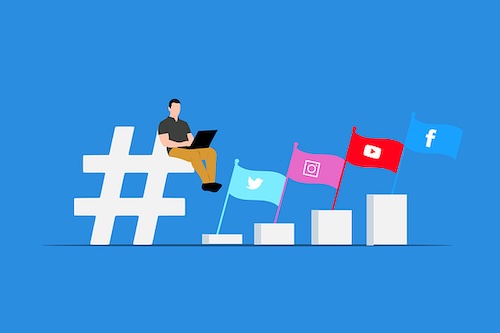In the digital era, social media has emerged as the heartbeat of consumer expression. More than just a platform for sharing updates, it has become a vast ecosystem where brands live and breathe alongside their audiences. To build meaningful connections and stay ahead of market shifts, brands must not only broadcast messages but truly listen. This is where social media listening—a powerful, data-driven practice—comes in. This comprehensive guide explores social media listening, its definition, benefits, and transformative potential, culminating in an introduction to Phyllo’s cutting-edge social listening solutions.
What Is Social Media Listening?
Social media listening is the process of scanning digital conversations happening around your brand, industry, products, or any topic of interest across various social media networks, blogs, forums, news sites, and review platforms.
Defining Social Media Listening
While social media monitoring tracks brand mentions and specific keywords, social media listening dives deeper. It gathers, organizes, and analyzes conversations—both direct and implied—to understand the context, sentiment, trends, and influencer impact. This enables brands to extract actionable intelligence, rather than raw data points.
- Broad Scope: Listening captures conversations on Facebook, Instagram, Twitter, TikTok, LinkedIn, YouTube, and beyond, including niche forums and blogs.
- Sentiment Analysis: Advanced tools use natural language processing to determine if online mentions express positive, neutral, or negative feelings.
- Trend Detection: It identifies emerging topics and hashtags before they become mainstream.
- Influencer Identification: Pinpoints key voices shaping public discussion.
In essence, social media listening reveals the voice of the customer and the market in real time.
Why Social Media Listening Matters: Key Benefits
Businesses that leverage social media listening unlock a host of strategic advantages empowering smarter decision-making, better customer engagement, and competitive agility.
1. Real-Time Brand Reputation Management
Social media listening helps brands detect shifts in public sentiment instantly. This real-time insight allows them to intervene early, respond to customer concerns, and manage reputation proactively—mitigating negative PR before it snowballs.
2. Rich Customer Insights and Market Understanding
By analyzing what customers say about products and services, brands can discover unmet needs, preferences, and emerging behaviors. This data guides product development, marketing messages, and customer experience initiatives.
3. Competitive Intelligence
Social listening provides detailed analysis of competitors’ campaigns, audience reactions, and influencer partnerships. Brands can benchmark their position and uncover opportunities to differentiate and innovate.
4. Campaign Performance Optimization
Tracking the resonance and public response to social media campaigns with listening tools enables marketers to rapidly adjust content, timing, or targeting strategies for maximum impact.
5. Influencer Marketing Insights and Safety
Identifying influential voices aligned to brand values and audience segments is enabled through social listening. Coupled with vetting tools, this ensures safe and authentic influencer partnerships.
How Social Media Listening Works: Tools and Technologies
To unravel the immense volume of unstructured online conversations, social media listening platforms leverage a combination of automation, AI, and data analytics.
Core Components:
- Data Collection: Using APIs and web crawlers, listening tools aggregate mentions, comments, hashtags, and multimedia content.
- Natural Language Processing (NLP): AI processes textual data to classify sentiment, detect themes, and filter noise.
- Data Visualization: Dashboards convert complex input into charts, heatmaps, and graphs for intuitive interpretation.
- Custom Alerts: Automated notifications flag crises or trending opportunities.
Popular Tools' Functionalities
Measuring the ROI of Social Media Listening: Real-World Impact and Insights
While the conceptual benefits of social media listening are clear, how does it translate into tangible business results? Measuring the return on investment (ROI) of social media listening can sometimes feel intangible, but several brands have demonstrated significant value through cost savings, revenue growth, enhanced brand reputation, and operational efficiencies.
How Social Media Listening Drives ROI
Social media listening contributes to ROI primarily by:
- Reducing Costs: It replaces or supplements traditional market research methods such as focus groups and surveys with real-time, continually updated consumer insights at a fraction of the cost.
- Increasing Revenue: Leveraging conversation data to optimize marketing campaigns, identify sales opportunities, and improve customer retention.
- Preventing Crises: Early detection and rapid response to negative sentiment or reputational risks help avoid costly PR disasters.
- Improving Customer Service: Faster response to social media queries reduces churn and improves lifetime customer value.
Case Study: Wendy’s Twitter Engagement Boosts Sales and Brand Loyalty
Wendy’s iconic Twitter persona is a prime example of how social listening and real-time engagement can enrich brand ROI. When a user requested free chicken nuggets, Wendy’s witty “18 million” response went viral, generating enormous engagement and free media coverage. This viral moment increased Wendy’s follower count significantly and translated into a measurable lift in foot traffic and sales in the subsequent quarter. Their marketing team used social listening data to continuously refine messaging and launch campaigns aligned with customer sentiment, showcasing how social media listening can directly influence sales and brand loyalty.
Case Study: Southwest Airlines’ Accelerated Customer Support
Southwest Airlines employs dedicated social media listening teams to monitor mentions during service disruptions and other events. Using color-coded dashboards to track sentiment quickly, Southwest aims to respond to customer inquiries within 15 minutes. This proactive approach has decreased negative sentiment by 25% during crisis periods and improved customer satisfaction scores. Cost savings arise from efficiently resolving social media complaints before escalation, reducing call center volumes and expensive remediation.
Case Study: Tylenol’s Market Insight and Content Strategy Pivot
Tylenol used social media listening to unearth unexpected consumer insights—namely, sufferers of migraines tied to sustained focus activities like knitting. By targeting content and SEO campaigns to this niche, Tylenol increased website traffic and deepened engagement with relevant audiences. This shift enhanced brand relevance and drove sales growth around specific product lines.
Quantifiable ROI: Numbers that Speak
A comprehensive social listening effort uncovered 1200 monthly brand mentions, 40% of which were untagged and invisible to prior monitoring. After engaging micro-influencers identified through listening data, earned media value was estimated at $9,000 over three months. Social listening also generated several qualified leads contributing directly to $6,000 in new revenue within the same period. Furthermore, early detection of a negative blog post helped the company avoid an estimated $5,000 in churn and PR costs, providing a 400% ROI on the social listening tool implemented.
Calculating Social Listening ROI: What Should You Measure?
To effectively measure ROI, brands should track:
- Volume and growth of brand mentions
- Sentiment shifts over time
- Engagement metrics on campaigns influenced by social listening
- Number and quality of leads generated via social monitoring
- Customer response times and satisfaction improvements
- Cost saved on traditional research and crisis management
Long-term tracking across these KPIs allows brands to quantify the impact of social listening on marketing spend and business outcomes.
Best Practices for Maximizing ROI from Social Listening
- Define clear objectives tied to business goals.
- Involve cross-functional teams (marketing, customer support, product).
- Use alerts and dashboards to enable rapid responses.
- Continuously integrate insights into campaign and product strategies.
- Evaluate ROI data periodically and refine approaches accordingly.
Read more:
How Can Social Media Listening Increase Customer Advocacy?
The Difference Between Social Media Monitoring vs. Social Media Listening
How to Build an Effective Social Media Listening Strategy: Step-by-Step Guide
Creating a successful social media listening program requires clear goals, the right tools, and systematic processes. Below is a detailed roadmap to help brands implement a strategy that turns social listening data into business-impacting insights.
Step 1: Define Your Objectives
Clear objectives are the foundation of an effective social listening strategy. They help focus your efforts and avoid overwhelm from the vast amount of social data.
Common social listening goals include:
- Brand Reputation Management: Track public sentiment and react quickly to protect or enhance brand image.
- Customer Experience Improvement: Understand customer pain points and respond to feedback.
- Competitive Intelligence: Monitor competitor campaigns, product launches, and audience feedback.
- Trendspotting & Content Ideation: Discover emerging topics and audience interests for relevant content creation.
- Influencer Identification: Find authentic voices aligned with your brand values.
- Campaign Tracking: Measure and optimize the real-time impact of social campaigns.
- Lead Generation: Identify prospective customers and market opportunities through keyword tracking.
Clearly articulate what success looks like with your social listening program and align these objectives with overall business goals.
Step 2: Select the Right Social Media Listening Tool
Choosing the appropriate tool depends on your unique needs and budget, but consider the following selection criteria:
- Channel Coverage: Ensure the tool monitors all relevant social channels, blogs, forums, and news sources your audience frequents.
- Sentiment and NLP Capabilities: A platform with advanced natural language processing can accurately gauge sentiment, tone, and context.
- Real-Time Alerts: Look for customizable alerts to react promptly to spikes or important mentions.
- Influencer and Competitor Analytics: Tools offering influencer scoring and competitor benchmarking add strategic value.
- User-Friendly Dashboards: Ease of interpretation and reporting accelerates adoption and impact.
- Integration and Scalability: The ability to integrate with CRM, marketing platforms, and analytics ecosystems simplifies workflows.
- Cost Efficiency: Balance features against pricing tiers to find sustainable solutions for your scale.
Top tools in the market include Phyllo’s developer-first solution, Brandwatch, Sprout Social, Talkwalker, and Awario, among others.
Step 3: Build Your Keyword and Topic List
Your listening queries are vital to capturing relevant data. Construct a list of keywords and hashtags that reflect your brand landscape, such as:
- Brand names and social media handles.
- Product lines and services.
- Industry-specific terminology.
- Campaign hashtags and slogans.
- Competitor names.
- Emerging topics relevant to your audience.
Use Boolean operators and filters to refine queries and reduce noise. Regularly update and optimize these lists based on performance data and shifting market conversations.
Step 4: Set Up Channels and Monitoring Parameters
Not all social channels may be relevant to your goals. Select platforms where your customers and industry conversations happen. For different business functions:
- Marketing teams might focus on Instagram, TikTok, Facebook, Twitter.
- PR teams often include news sites and blogs.
- Customer support may monitor forums and review sites.
Group monitoring sources logically to help your teams access data efficiently and tailor insights by segment or geography.
Step 5: Analyze Social Listening Data
Data is only powerful when analyzed with precision:
- Track sentiment over time to observe brand health.
- Identify recurring themes or sudden spikes indicating issues or opportunities.
- Analyze influencer contributions and engagement impact.
- Monitor share of voice to understand your market position vs competitors.
- Segment insights by demographics, location, or platform for granularity.
Use built-in analytics dashboards or export data for deeper analysis via BI tools.
Step 6: Activate Insights and Respond
A social listening strategy’s success lies in action:
- Develop response frameworks for positive, neutral, and negative mentions. Differentiate messaging and escalation accordingly.
- Engage with customers by answering queries, thanking advocates, or addressing concerns.
- Adjust marketing messaging based on trending topics and customer needs.
- Use insights to inform product development roadmaps and innovation.
- Detect crises early, convene response teams, and mitigate risks proactively.
Consistent review and iteration ensure the program evolves with your brand and market dynamics.
Step 7: Measure and Report on Outcomes
Establish KPIs aligned with your objectives, such as:
- Changes in sentiment score.
- Engagement rates on social posts topics uncovered via listening.
- Customer satisfaction improvements.
- Crisis response times.
- Leads generated or conversions influenced.
Regularly share clear, actionable reports with stakeholders to showcase value and gain buy-in for continuous investment.
Step 8: Foster Cross-Departmental Collaboration
Social listening impacts teams beyond marketing: PR, customer service, product development, and sales all benefit from insights. Encourage shared access, joint strategy sessions, and clear communication to maximize impact.
A methodical, goal-driven approach to social media listening empowers brands to harness the full power of social conversations—from understanding influencers to spotting crises early—all driving competitive differentiation and customer loyalty.
Leveraging Phyllo’s State-of-the-Art Social Listening Suite
Phyllo offers comprehensive, developer-friendly social listening products designed for today's dynamic brand needs.
Social Listening API
Unified real-time data access across YouTube, Instagram, TikTok, Facebook, Twitter, and LinkedIn lets marketers analyze sentiment, trends, topics, and key influencers through one seamless API.
Social Screening
Ensures brand safety and compliance by authenticating and vetting social profiles, preventing risks in influencer partnerships.
Social Media Intelligence
Combines diverse data streams into actionable audience insights and campaign analytics that optimize performance and strategy.
Influencer Vetting for Brand Safety
Layered checks confirm influencer credibility and audience alignment, safeguarding brands from partnership risks.
Phyllo’s solutions integrate effortlessly, allowing brands and agencies to embed powerful listening capabilities into their platforms.
Explore Phyllo’s solutions:
- Phyllo Social Listening API
- Phyllo Social Screening
- Phyllo Social Media Intelligence
- Phyllo Influencer Vetting for Brand Safety
FAQs:
1. What is social media listening and how is it different from monitoring?
Social media listening involves tracking and analyzing conversations to understand sentiment, trends, and customer feelings, while monitoring focuses on counting brand mentions and keywords.
2. How does social media listening benefit brands?
It empowers brands to manage reputation, improve customer experience, optimize campaigns, and gain competitive market intelligence.
3. Can social media listening predict trends?
Yes, advanced tools analyze pattern shifts in data to forecast emerging trends or viral topics.
4. What role do influencers play in social media listening?
Identifying influential voices allows brands to engage authentically and measure customer outreach impacts.
5. Is social media listening suitable for small businesses?
Many platforms offer scalable solutions tailored for startups and small businesses, helping enhance customer insights affordably.
6. How does Phyllo’s social listening solution stand out?
Phyllo offers developer-friendly APIs with broad platform coverage and advanced influencer vetting that maximizes brand safety and marketing precision.
Social media listening is no longer just a tool but a strategic necessity that transforms how brands interact, innovate, and thrive in a customer-centered digital world. Embrace this power with next-gen solutions like Phyllo and unlock the true potential of social data in 2025 and beyond.












.webp)
